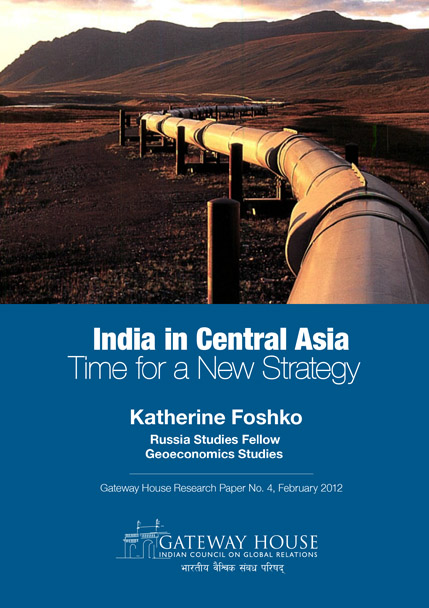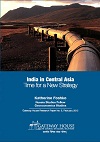
Introduction
In the past few years, India’s policy towards the countries forming the core of Central Asia—Kazakhstan, Kyrgyzstan, Tajikistan, Turkmenistan, and Uzbekistan—has shown the greatest progress since these states ceased to be republics of the Soviet Union. Since its independence in 1991, the little-known region of 62 million people has drawn increasing attention as the sixth-largest producer of hydrocarbons in the world and the fourth-largest producer of gas. It is also rich in other resources such as uranium and hydropower. From the geopolitical point of view, the Central Asian states (CAS), an economy of $217 billion,1 occupy a crucial position since they border Afghanistan and could be a hub of either regional security or, on the contrary, destabilization through networks of international terrorism and drug supply that extend from the war-ravaged nation all the way to Europe. It is important to note that Afghanistan can be seen as an extension of the Central Asian strategy and a way of conceptualizing it more broadly. Here, the Afghan state will be discussed as part of the long-term strategic and economic interests of India in the five Stans.
The CAS’ significance to its neighboring region, in which India seeks to play a leading role, cannot be overestimated. After a decade and a half of desultory ties, it appears that India has finally awakened to Central Asia, with which it had been connected for centuries by commerce along the Great Silk Road. This ancient network of interlinking trade routes in East, South, and Western Asia had been inactive since the fifteenth century, until the Partition of 1948 severed the last of the territorial ties. Central Asia now possesses a modern kind of currency—natural resources, particularly oil and gas—and a number of states have seized upon the importance of its abundant wealth and strategic location.
Related reading:
1. You can read a précis of this paper here.
2. India-Kazakhstan: Looking beyond energy
Gateway House published this Op-Ed, by Katherine Foshko, on 14 April, 2011, before Prime Minister Manmohan Singh’s visit to Astana. She argue that the India-Kazakhstan relationship is in need of a massive overhaul, and identifies the possibilities to transform the relationship from a short-sighted association into a strategic, long-term one, focusing on energy, security, trade and technology.
3. India-Kazakhstan: Looking beyond energy II
Gateway House published this Op-Ed, by Katherine Foshko, on 28 April, 2011, after Prime Minister Manmohan Singh met with Kazakhi President Nursultan Nazarbayev. She writes that if the countries enhance their “arms-length transactional” relationship, a deeper alliance can be forged to include untapped sectors with immense potential.
You can download the PDF version of this paper, here.
Katherine Foshko, Fellow, Russia Studies, Gateway House.
This paper was exclusively written for Gateway House: Indian Council on Global Relations. You can read more exclusive content here.
For interview requests with the author, or for permission to republish, please contact outreach@gatewayhouse.in.
©Copyright 2012 Gateway House: Indian Council on Global Relations. All rights reserved. Any unauthorized copying or reproduction is strictly prohibited.


